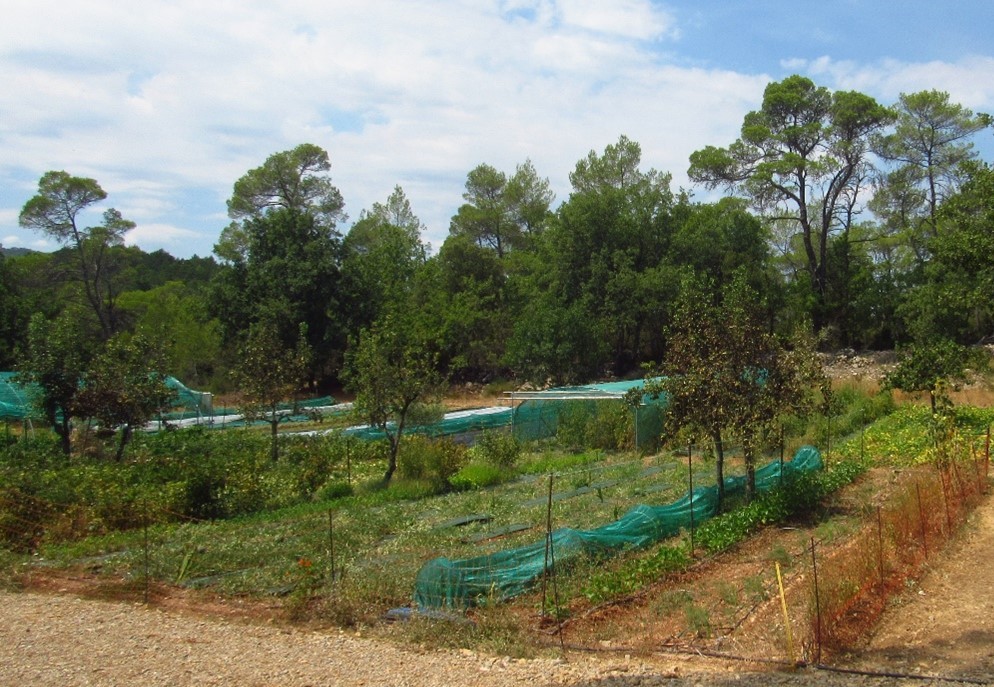Fruits and vegetables intercropping
Intercropping is recognized as a very promising technique to ensure a good agricultural production while reducing the negative impacts of agriculture on ecosystems.
In the mixed orchard market gardens of our group in France, farmers combine a lot of vegetable and fruit species cultivated very close one to the other. This method is called intercropping. Agroforestry can be considered as a particular type of intercropping where one of the associated specie is a tree. A scientific review[1] proved that intercropping to grow vegetable had many advantages:
- It helps rationalise the use of land;
- It produces less greenhouse gases than sole crops;
- It preserves the quality of the soil;
- It can contribute to control certain diseases and pests without pesticide;
- It can reduce the need to control the weeds without herbicides;
- It can significantly improve the crop yield.
In France, we identified that bird presence in the parcels can be an indicator of resilience because they can eat certain pests. That’s why in spring, we will conduct ornithological monitoring in the parcels of our group and compare them with more conventional parcels to evaluate if intercropping has an influence on the bird presence and the services they provide.
In Transition we are also currently conducting a metanalysis to evaluate quantitatively the effect of agroforestry intercropping on the yield of various crops around the Mediterranean basin.
Léa Garreau
(INRAE)
15/02/2023
[1] Avasiloaiei D-I, Calara M, Benchea M-C, Cristea TO (2022) Review on the Positive Influence of Intercropping Systems for Organic Vegetable Growing. Sci Pap-Ser B-Hortic 66:397–408





